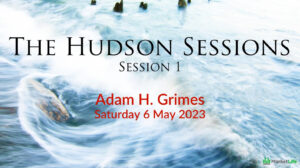 I want to take a few moments and share some information on the new little book I have released. First, it is exactly what the title says: it is a primer, or first steps, in applying quantitative tools to market data. If you have a rigorous quantitative background, there might not be so much for you in this book (though you might find a few ideas that challenge some of your thoughts.) I wrote this book for the trader who might not understand where to begin or what tools might be useful in looking at market data. There are more and more tools that allow traders to run tests and do research on market tendencies, but these are dangerous unless the trader understands what he or she is doing and how these tools can be misleading.
I want to take a few moments and share some information on the new little book I have released. First, it is exactly what the title says: it is a primer, or first steps, in applying quantitative tools to market data. If you have a rigorous quantitative background, there might not be so much for you in this book (though you might find a few ideas that challenge some of your thoughts.) I wrote this book for the trader who might not understand where to begin or what tools might be useful in looking at market data. There are more and more tools that allow traders to run tests and do research on market tendencies, but these are dangerous unless the trader understands what he or she is doing and how these tools can be misleading.
You will understand why both means and medians are important. I hope you will begin to develop some intuition about why standard deviation matters. I also hope you’ll learn why most approaches to seasonality are flawed, and will come away deeply suspicious of many “studies” and “stats” that people throw around. As a bonus, I hope you’ll never be suckered into another argument that involves putting two or more price charts on the same graph!
How do you get the book? Well, there are a few ways. First, it’s free. Sign up for my email list on the side of this blog and you get a pdf of the book. I also made it available on Kindle: if you have the kindleunlimited program, it’s available for free there, too. If not, it’s a few dollars. If you want to hold it in your hands, I also made a hardcopy available.
This book is the first in what will probably be a long series of whitepapers. I’ve experimented with in-depth blogs and multipart blogs, but I don’t think a blog is the right medium for that. Having a whitepaper series will let us dig a lot deeper into some of the stats and tendencies driving markets.
If you’ll let me indulge in a little personal note here, I’d like to share a few things I encountered putting this book together. This was originally between the covers of my “big book”, The Art and Science of Technical Analysis. One of my proofreaders pointed out that the book was basically two books in one: a fairly rigorous quantitative approach to the market, and a set of applied, practical tools for traders. That was exactly my original idea for the book, and I accomplished what I set out to do.
 However, sometimes getting what we want is not a good thing; though I wrote the book I planned, one of my readers pointed out that it didn’t really work. In trying to serve two audiences, it was just too much in so many ways. So, I ended up cutting about half the book in a final edit before it went to press. The material in this new, small book was drawn from some of what I cut from the big book.In getting it laid out and into print, I learned so much. Like most people, I had a mild distaste for Microsoft Word, but once you’ve used a real layout program that distaste will grow into a burning hatred when you start to see exactly how clumsy a word processor can be. I learned a lot about typography. (Did you realize that serif and sans-serif fonts date back to Roman and Greek times, and that tension between the Empire and the Republic would be echoed through the next two thousand-odd years of scribal work and, eventually, printing? I didn’t!) I also learned why your pages never look quite right in Word: there are principles and proportions of page layout and design that go back a few thousand years and there is an intuitive “rightness” to pages laid out according to these rules. I could go on, but I think you’re getting the point–this has certainly been an adventure, and I look forward to publishing more in the near future!I hope you enjoy the book, and find something useful there.
However, sometimes getting what we want is not a good thing; though I wrote the book I planned, one of my readers pointed out that it didn’t really work. In trying to serve two audiences, it was just too much in so many ways. So, I ended up cutting about half the book in a final edit before it went to press. The material in this new, small book was drawn from some of what I cut from the big book.In getting it laid out and into print, I learned so much. Like most people, I had a mild distaste for Microsoft Word, but once you’ve used a real layout program that distaste will grow into a burning hatred when you start to see exactly how clumsy a word processor can be. I learned a lot about typography. (Did you realize that serif and sans-serif fonts date back to Roman and Greek times, and that tension between the Empire and the Republic would be echoed through the next two thousand-odd years of scribal work and, eventually, printing? I didn’t!) I also learned why your pages never look quite right in Word: there are principles and proportions of page layout and design that go back a few thousand years and there is an intuitive “rightness” to pages laid out according to these rules. I could go on, but I think you’re getting the point–this has certainly been an adventure, and I look forward to publishing more in the near future!I hope you enjoy the book, and find something useful there.


Adam,
This is a very useful addition to your main book – I am looking forward the other 400+ pages that you were not able to incorporate in you original edition of “The Art and Science of TA”
Thanks again for sharing it on your website 🙂
Eddy
PS : by the way, in the Appendix B of your main book, don’t you have a typo about your MACD configuration parameters (p 417) ? – You mention that EMAs “does makes a difference at times”, but all your MACD settings detailed just before are on SMA ?? Are you typically using EMA or SMA inside your MACD set ups ?
Thank you… it’s just a little book, but I hope it helps some people get started in some new directions.
Thanks for the point in the Appendix, but I think it’s correct as-is: I’m using SMAs for this indicator, but the standard MACD uses EMAs. So, what I meant was just make sure you are using SMAs.